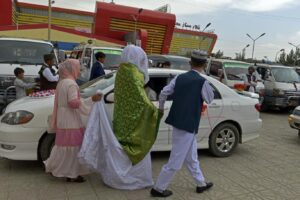KABUL (SW) – According to Salam Watandar’s investigation, over the past year, in 14 incidents, 145 Afghan citizens have died in irregular migration routes and dozens of others have been injured.
During the first six months of the rule of the Islamic Emirate, in three events, five Afghan citizens died in the migration routes, four of which were registered at the borders of Iran and another one was registered at the border of Macedonia.
Likewise, during this period, nine Afghan citizens were injured and two children were also affected by severe cold.
In past 12 months, 140 Afghan migrants died in 11 incidents on migration routes. Most of these events have been recorded in Italy, Bulgaria, Iran and the Iran-Turkey border, and the reason for the death of most of these refugees was the sinking of the boat carrying them, the lack of oxygen and the confinement of the space, the collision of the cars carrying the refugees and shelling by the border forces.
Turpiki Amarkhel, the former announcer of Afghanistan’s national radio-television, was also among the victims of these event. One of Turpiki’s colleagues, who did not want to be named, told Salam Watandar: “Just three months ago, I had a message from Turpiki who said that she wanted to go to Turkey and she has been in Turkey for some time. She wanted to go to Europe with five members of her family. As far as I have heard from her brother, they have not even managed to find her body.”
Hilal, an Afghan citizen who went to Iran irregularly last year and then to Turkey, says: “Smuggling routes have many dangers and problems. Every step is close to death. There is no water, there is no food. Those who were with us died of hunger and thirst. When we went to Iran, we walked for 48 hours, and in Iran, they put five people in the trunk of the car, where we were suffocating. Smugglers play with people’s lives.”
Meanwhile, Mohammad Nabi Ahmadi, an expert on social issues, states that insecurity, lack of life immunity, unemployment and despair over the uncertain future are among the most important factors of citizens’ migration abroad.
He says: “Wars, livelihood problems, insecurity and unemployment are among the causes of migration in Afghanistan. The rate of poverty and unemployment is high and people feel insecure. The country is always in instability and an unknown situation. People see the future as vague and dark, which is why they migrate in groups.”
Officials in the Ministry of Economy say that they have paid special attention to large economic and infrastructure projects for poverty alleviation and entrepreneurship.
Abdulrahman Habib, the spokesman of this ministry, says: “The Ministry of Economy, as a policy-making department, focuses more on the agriculture, industry, trade and mining sectors in order to create jobs and gradually reduce the level of poverty, maintain and develop the economy because in previous years, with the opening of large economic and infrastructure projects, special attention was paid to internal development to provide people with work, for example, about 5,500 people are working in the Qosh Tape project, which is one of the infrastructure and economic projects. Thousands of others are also engaged in mining.”
After the establishment of the Islamic Emirate, the process of migration to European countries has intensified and according to the statistics of the European Union, last year more than 113 thousand Afghans applied for asylum in European countries.
ENDS






